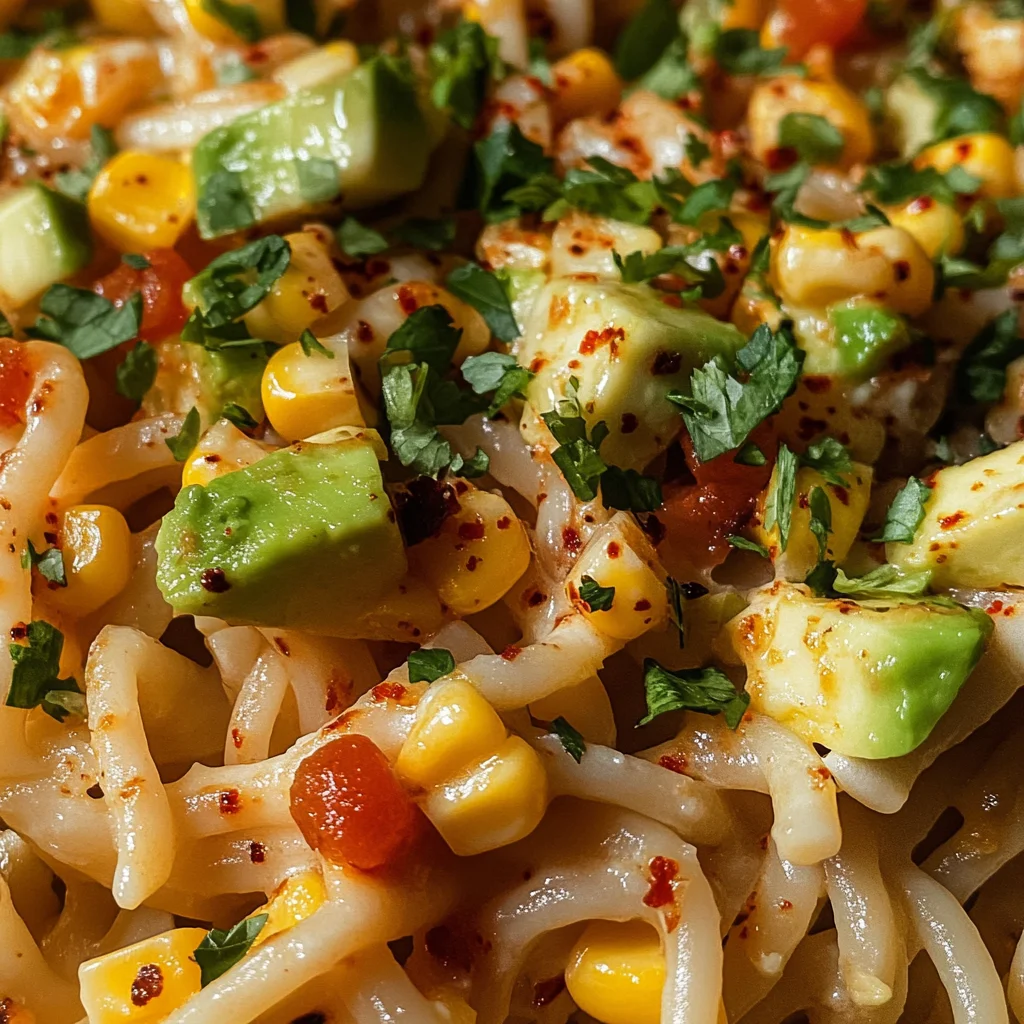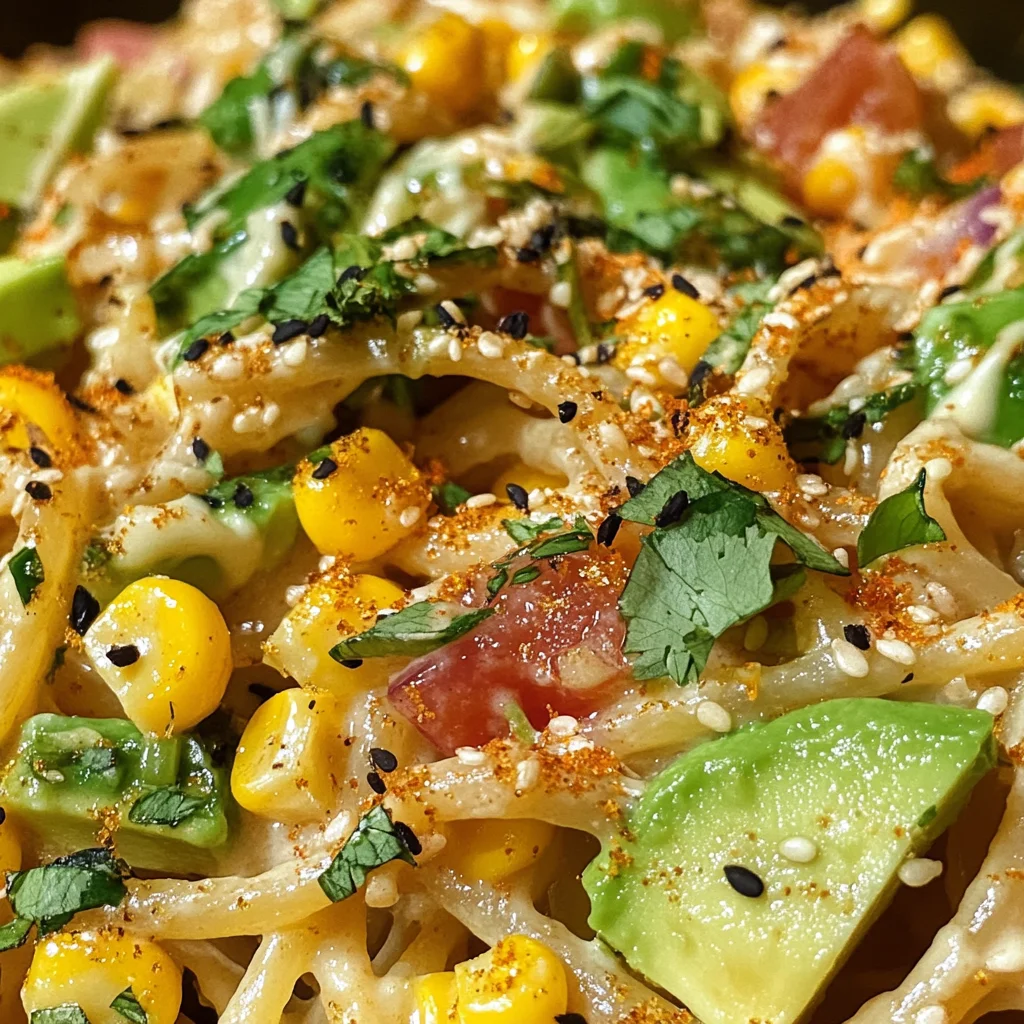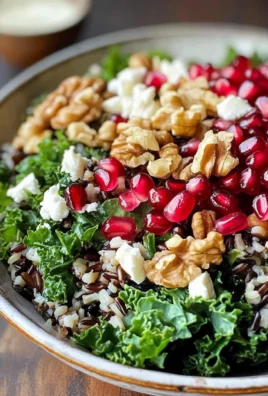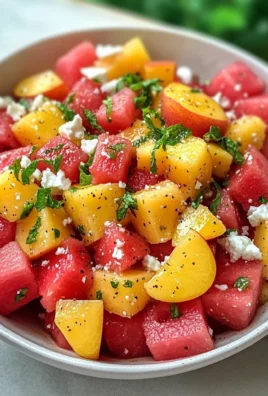Japchae is a delicious and versatile dish that showcases the unique chewy texture of sweet potato glass noodles. This traditional Korean recipe is perfect for various occasions, whether you’re hosting a dinner party or enjoying a cozy night in. With its vibrant vegetables and savory-sweet flavor profile, Japchae is not only satisfying but also easy to customize to suit your taste preferences.
Why You’ll Love This Recipe
- Quick and Easy Preparation: This Japchae recipe comes together in just about an hour, making it perfect for busy weeknights.
- Flavorful and Savory: The combination of soy sauce, sesame oil, and brown sugar creates a delightful balance of flavors that will impress your taste buds.
- Customizable Ingredients: Feel free to swap out beef for chicken, tofu, or shrimp, and add your favorite veggies for a personal touch.
- Nutritious Meal Option: Packed with fresh vegetables like carrots and spinach, this dish is as healthy as it is tasty.
- Perfect for Sharing: Japchae makes an excellent dish for gatherings and celebrations, allowing everyone to enjoy its comforting flavors.
Tools and Preparation
To make Japchae successfully, having the right tools on hand is essential. Here are a few must-haves that will simplify your cooking process.
Essential Tools and Equipment
- Large pot
- Skillet
- Mixing bowl
- Cutting board
- Knife
Importance of Each Tool
- Large pot: Ideal for boiling the sweet potato noodles quickly without overcrowding.
- Skillet: Perfect for stir-frying ingredients evenly over high heat, enhancing the flavors.
- Mixing bowl: Useful for combining all ingredients before serving to ensure even distribution of flavors.

Ingredients
For the Noodles
- 1 lb Korean sweet potato noodles (glass noodles)
- 4 tbsp sesame oil (divided)
- 1 tbsp olive oil
For the Vegetables
- 3 medium carrots, julienned
- 1 large white onion, thinly sliced
- 1/2 bunch green onions, chopped
- 6 garlic cloves, minced
- 1/2 lb spinach leaves
For the Protein
- 2 lb thin-sliced beef (or sub with chicken or tofu)
For Seasoning
- 6 tbsp soy sauce (or tamari for gluten-free)
- 3 tbsp brown sugar
How to Make Japchae
Step 1: Prepare the Noodles
- Bring water to a boil in a large pot with a drizzle of olive oil.
- Add the sweet potato noodles and cook for 5-6 minutes until tender.
- Drain the noodles and set aside.
Step 2: Cook the Beef
- In a skillet over high heat, add thin-sliced beef.
- Season with half the soy sauce, sesame oil, and brown sugar while cooking until browned.
- Set aside once cooked through.
Step 3: Sauté the Vegetables
- Heat olive oil in another skillet over medium-high heat.
- Add julienned carrots and onion; cook until softened (about 4 minutes).
- Stir in remaining soy sauce, sesame oil, and brown sugar.
- Mix in minced garlic and chopped green onions; cook for an additional minute.
Step 4: Combine Everything
- Add fresh spinach to the skillet; stir until wilted.
- Incorporate cooked beef and drained noodles into the vegetable mixture.
- Toss everything well in a large mixing bowl until evenly combined.
Step 5: Serve Your Japchae
- Serve warm on plates or in bowls.
- Garnish with extra chopped green onions if desired.
With its comforting flavors and nourishing ingredients, Japchae is sure to become a favorite in your meal rotation! Enjoy every delicious bite!
How to Serve Japchae
Japchae is a delightful dish that is versatile and perfect for any occasion. It’s not only visually appealing but also packed with flavors and nutrients. You can serve Japchae as a main dish, a side, or even as part of a larger spread at gatherings. Here are some serving suggestions to elevate your Japchae experience.
Pair with Fresh Sides
- Kimchi: This spicy fermented vegetable dish adds a tangy contrast that complements the sweetness of Japchae.
- Cucumber Salad: A light cucumber salad with sesame oil and vinegar adds a refreshing crunch.
- Pickled Radishes: These tangy bites provide a crisp texture and brightness that balance the noodles.
Enhance with Toppings
- Sesame Seeds: Sprinkle toasted sesame seeds on top for added flavor and crunch.
- Chili Flakes: For those who enjoy some heat, add chili flakes to spice up the dish.
- Chopped Nuts: Use peanuts or cashews for an extra layer of richness and texture.
How to Perfect Japchae
Perfecting Japchae involves attention to detail in both cooking technique and ingredient selection. The harmony of flavors and textures makes this dish truly special. Follow these tips to ensure your Japchae turns out delicious every time.
- Use Fresh Ingredients: Always opt for fresh vegetables like carrots, spinach, and onions to enhance flavors.
- Don’t Overcook Noodles: Sweet potato noodles should be cooked just until tender; they will continue cooking when tossed with hot ingredients.
- Adjust Seasoning: Taste and adjust soy sauce, sugar, or sesame oil based on your preference for sweetness or saltiness.
- Customize Protein Choices: Feel free to substitute beef with chicken, tofu, or shrimp based on dietary preferences.
Best Side Dishes for Japchae
Adding complementary side dishes to your meal ensures a well-rounded dining experience. Here are some fantastic options that pair beautifully with Japchae.
- Bulgogi: Marinated beef grilled to perfection; its sweet marinade complements the flavors of Japchae.
- Korean Fried Chicken: Crispy fried chicken coated in sweet and spicy sauce adds crunch alongside the chewy noodles.
- Vegetable Tempura: Lightly battered vegetables provide a crispy texture that contrasts nicely with the soft noodles.
- Steamed Rice: A simple bowl of rice balances the flavors of Japchae while providing additional substance.
- Miso Soup: This comforting soup is light yet flavorful, making it a soothing addition to your meal.
- Grilled Eggplant: Smoky grilled eggplants topped with soy sauce offer depth of flavor that pairs well with the noodles.
- Seaweed Salad: A refreshing seaweed salad brings a hint of umami that enhances the overall meal experience.
- Tofu Steaks: Grilled or pan-fried tofu steaks seasoned with soy sauce make for a satisfying vegetarian option alongside Japchae.
Common Mistakes to Avoid
When making Japchae, it’s easy to overlook some details that can affect the final dish. Here are common mistakes to avoid for the best results.
-
Skipping the soaking step: Not soaking the sweet potato noodles can lead to a sticky texture. Always soak them in warm water for 30 minutes before cooking to achieve that perfect chewy consistency.
-
Overcooking the vegetables: Cooking the vegetables too long can make them mushy and lose their vibrant colors. Stir-fry them just until they’re tender-crisp to retain flavor and texture.
-
Not seasoning enough: Failing to properly season with soy sauce and sesame oil can leave Japchae bland. Taste as you cook and adjust the seasoning for a balanced flavor profile.
-
Using high heat throughout: Cooking on too high a heat can cause ingredients to burn rather than sauté. Use medium-high heat when stir-frying and adjust as needed for even cooking.
-
Neglecting garnishes: Skipping fresh green onions or sesame seeds means missing out on added flavor and visual appeal. Always include these toppings for an enhanced presentation and taste.

Storage & Reheating Instructions
Refrigerator Storage
- Duration: Store leftover Japchae in the refrigerator for up to 3 days.
- Containers: Use airtight containers to maintain freshness and prevent drying out.
Freezing Japchae
- Freezing Duration: You can freeze Japchae for up to 2 months.
- Containers: Use freezer-safe bags or containers, removing as much air as possible before sealing.
Reheating Japchae
- Oven: Preheat your oven to 350°F (175°C). Place Japchae in an oven-safe dish, cover with foil, and heat for about 15-20 minutes until warmed through.
- Microwave: Place a serving of Japchae in a microwave-safe bowl, cover, and heat on high for 1-2 minutes, stirring halfway through.
- Stovetop: Reheat in a skillet over medium heat. Add a splash of water or broth if it seems dry, stirring occasionally until heated through.
Frequently Asked Questions
Here are some common questions about making Japchae that may help you along the way.
What is traditional Japchae made of?
Traditional Japchae is made with sweet potato starch noodles, also known as glass noodles, stir-fried with various vegetables, meat (like beef), soy sauce, and sesame oil.
Can I make Japchae vegetarian?
Yes! You can easily make a vegetarian version by substituting meat with tofu or simply adding more vegetables.
How do I store leftover Japchae?
Store leftover Japchae in an airtight container in the refrigerator for up to three days or freeze it for up to two months.
What should I serve with Japchae?
Japchae pairs well with rice dishes or can be served as part of a larger Korean meal alongside other side dishes like kimchi or pickled vegetables.
Can I use different types of noodles?
While traditional Japchae uses sweet potato glass noodles, you can experiment with other noodles like rice vermicelli or zucchini noodles for different textures and flavors.
Final Thoughts
Japchae is not just delicious; it’s also versatile! This dish allows you to mix and match ingredients according to your preferences. Whether you choose beef, chicken, tofu, or extra veggies, every bowl offers a satisfying blend of flavors. Give this recipe a try and discover how easy it is to create your own unique version of this beloved Korean dish!
Japchae
Japchae is a flavorful and vibrant Korean dish that features chewy sweet potato glass noodles stir-fried with an array of fresh vegetables and your choice of protein, such as beef, chicken, or tofu. This delightful recipe balances savory soy sauce and nutty sesame oil with a hint of sweetness from brown sugar, creating a deliciously satisfying experience in every bite. Perfect for gatherings or cozy dinners at home, Japchae is not only easy to prepare but also highly customizable to suit your taste preferences. Enjoy it warm, garnished with green onions for an added touch of freshness.
- Prep Time: 30 minutes
- Cook Time: 30 minutes
- Total Time: 1 hour
- Yield: Serves approximately 6 people 1x
- Category: Main
- Method: Stir-frying
- Cuisine: Korean
Ingredients
- 2 lb thin-sliced beef (or substitute with chicken or tofu)
- 1 lb Korean sweet potato noodles (glass noodles)
- 3 medium carrots, julienned
- 1 large white onion, thinly sliced
- 1/2 bunch green onions, chopped
- 6 garlic cloves, minced
- 1/2 lb spinach leaves
- 4 tbsp sesame oil (divided)
- 1 tbsp olive oil
- 6 tbsp soy sauce (or tamari for gluten-free)
- 3 tbsp brown sugar
Instructions
- 1. Bring a large pot of water to a boil with a drizzle of olive oil. Add the sweet potato noodles and cook for about 5-6 minutes until tender. Drain and set aside.
- 2. In a skillet over high heat, add the thin-sliced beef and season it with half of the soy sauce, sesame oil, and brown sugar. Cook until browned; then set aside.
- 3. In another skillet, heat olive oil over medium-high heat. Add the julienned carrots and onion; cook until softened (around 4 minutes). Stir in the remaining soy sauce, sesame oil, and brown sugar. Mix in the minced garlic and chopped green onions; cook for an additional minute.
- 4. Add spinach to the skillet and stir until wilted. Combine the cooked beef and drained noodles into the vegetable mixture. Toss everything together in a large bowl until evenly mixed.
- 5. Serve warm on plates or bowls; garnish with extra chopped green onions if desired.
Nutrition
- Serving Size: 1 cup (245g)
- Calories: 489
- Sugar: 9g
- Sodium: 820mg
- Fat: 24g
- Saturated Fat: 4g
- Unsaturated Fat: 18g
- Trans Fat: 0g
- Carbohydrates: 56g
- Fiber: 3g
- Protein: 22g
- Cholesterol: 70mg




Leave a Comment